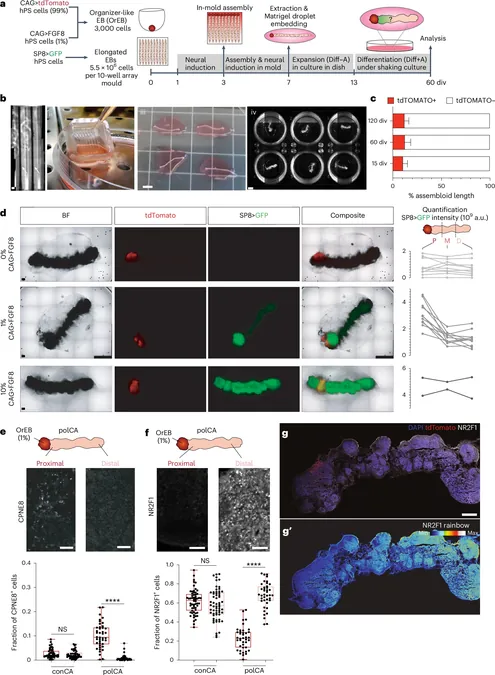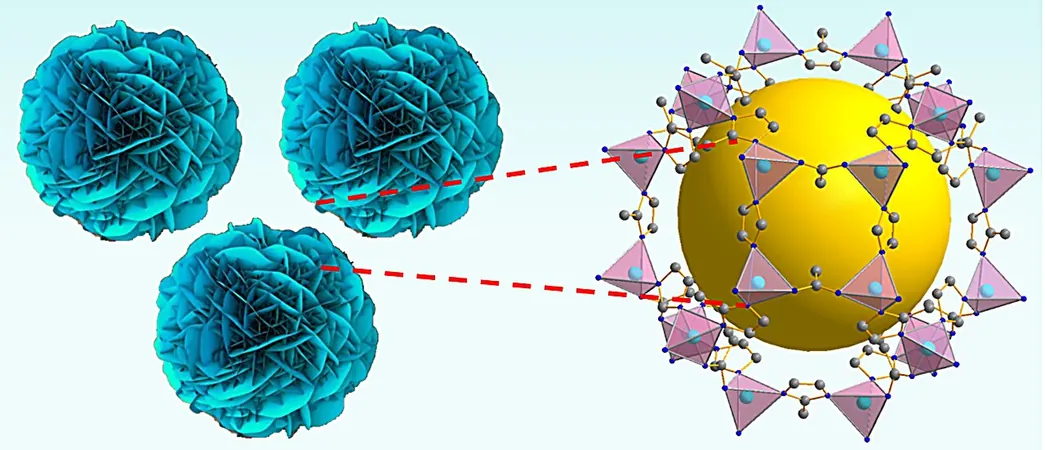
Revolutionary Brain Organoid Model Unveils Secrets of Human Cortex Development!
2024-09-18
Author: Mei
In an astonishing breakthrough, a research team led by Jürgen Knoblich at the Institute of Molecular Biotechnology (IMBA) of the Austrian Academy of Sciences has developed a groundbreaking method to cultivate brain organoids that mirror the distinct cortical areas of the human brain. This innovative technique provides an unprecedented understanding of human-specific brain development and may offer new insight into various neurological disorders. The study was published in the acclaimed journal Nature Methods on September 18.
What are Brain Organoids?
Brain organoids are 3D structures created from human pluripotent stem cells that serve as crucial models for investigating human brain development. These organoids help researchers explore critical questions, such as why the human brain is larger compared to other species and how long-range neural connections are formed. However, traditional cortical organoids have uniformly spherical shapes, resembling miniature footballs, which do not accurately represent the complex, elongated structure of the human cortex.
A New Era of Research
The distinguished team has devised a novel protocol to produce cerebral organoids organized into distinct regions along the longitudinal axis—effectively replicating the human cortex's architecture. The study was led by the talented trio of Camilla Bosone, Veronica Krenn, and Davide Castaldi, who paved the way for this significant advancement.
This innovative model utilizes a technique involving the application of specific signaling molecules known as morphogens. The researchers initially created long linear organoids and then patterned them by introducing FGF8—an essential factor for establishing gene expression and cell distribution along the organoid's length. This method offers consistent and reliable polarity that closely aligns with the structure of a human cortex.
Implications for Understanding Brain Disorders
One of the most exciting applications of this new patterned organoid model is its potential to study brain disorders. For instance, in individuals with achondroplasia—a condition impacting bone growth—the temporal lobe (a critical brain area) develops improperly. This is closely linked to a genetic mutation affecting FGFR3, which is a receptor for FGF8 signaling. When applied to the patterned cortical organoids, this mutation resulted in significant changes to patterning and cell growth.
Knoblich emphasizes that these patterned organoids serve as a vital resource for studying developmental disruptions that lead to various disorders, including autism. The team envisions that these organoids could bridge the gap between genetic and environmental influences on neurodevelopmental conditions, potentially unveiling critical early cortical patterning events linked to these disorders.
A Deeper Dive into Cortex Development
Beyond mere disorder models, the newly developed patterned organoids provide valuable insights into normal human brain development processes. The intricate interplay of morphogens and signaling pathways makes isolating individual contributions challenging in traditional models. However, in the patterned brain organoids, FGF8 emerges as the lone signal defining various cortical domains, revealing its pivotal role in cortical patterning.
By fusing organoids that generate different morphogens and meticulously controlling both timing and the quantity of these cells, the researchers have produced polar cortical assembloids (PolCAs) that serve as ideal in vitro models. According to Bosone, this approach enables the examination of specific signaling pathways in isolation, facilitating an enhanced understanding of how neurons acquire their identity during development.
As this cutting-edge research unfolds, the implications for neuroscience are profound. The patterned brain organoids could pave the way for major advancements in our understanding of the human brain—offering hope for the treatment of neurological disorders while shedding light on the complex mechanisms that underpin human cognition.
Stay tuned as these visionary scientists continue to explore the depths of brain development, potentially transforming our approach to neurological research and therapy!


 Brasil (PT)
Brasil (PT)
 Canada (EN)
Canada (EN)
 Chile (ES)
Chile (ES)
 Česko (CS)
Česko (CS)
 대한민국 (KO)
대한민국 (KO)
 España (ES)
España (ES)
 France (FR)
France (FR)
 Hong Kong (EN)
Hong Kong (EN)
 Italia (IT)
Italia (IT)
 日本 (JA)
日本 (JA)
 Magyarország (HU)
Magyarország (HU)
 Norge (NO)
Norge (NO)
 Polska (PL)
Polska (PL)
 Schweiz (DE)
Schweiz (DE)
 Singapore (EN)
Singapore (EN)
 Sverige (SV)
Sverige (SV)
 Suomi (FI)
Suomi (FI)
 Türkiye (TR)
Türkiye (TR)
 الإمارات العربية المتحدة (AR)
الإمارات العربية المتحدة (AR)